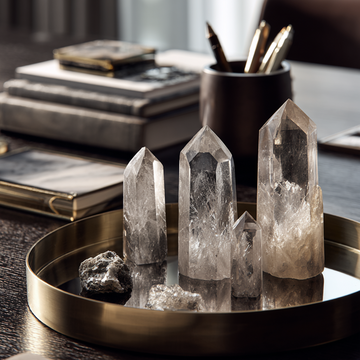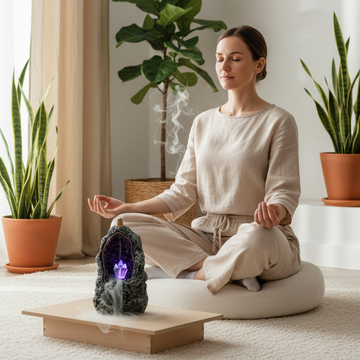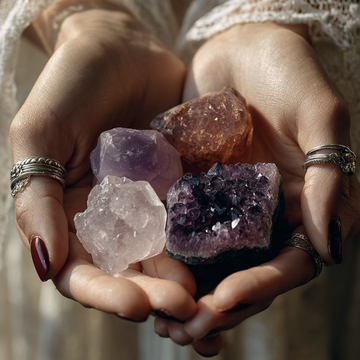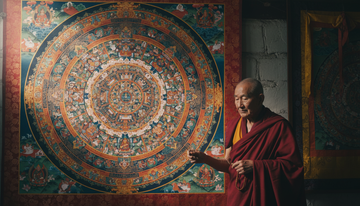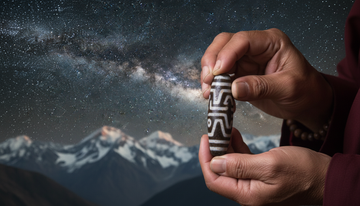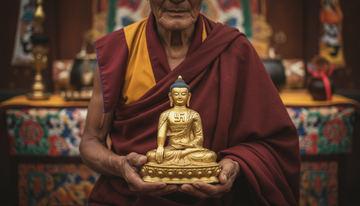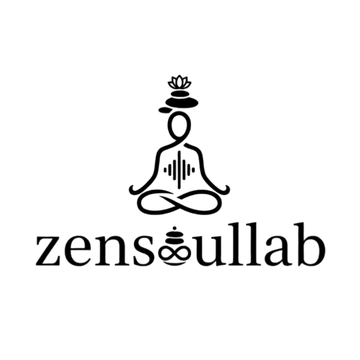When exploring the world of Thangka art, there's a particular style of painting that has the power to instantly capture your entire attention.
Unlike other Thangkas that feature a central deity, this type is a breathtakingly complex universe of perfect lines, symmetrical geometry, and a host of divine figures, all harmoniously contained within a circle or square. Your eye is instinctively drawn to the center, and from there, you begin a mesmerizing visual journey along its intricate pathways.
This is a Mandala.
The first time I stood before a large Kalachakra Mandala Thangka in the zensoullab gallery, I felt like I was being pulled into it. The feeling went far beyond simple admiration for its beauty; it was a profound sense of order, completeness, and sacredness all at once. I knew, in that moment, that this was no mere pattern. This was a blueprint of the entire cosmos.
Today, I want to invite you to "read" this cosmic map with me.
A Mandala is More Than Just a Pattern
In Tibetan Buddhism, a Mandala (which means "circle" in Sanskrit) is infinitely more profound than a geometric design. You can think of it as two things simultaneously:
-
A Divine Palace: It's a celestial mansion for enlightened beings, a pure and perfect realm. The figure at the very center is the principal deity, the host of this divine palace.
-
A Map of the Mind: A Mandala is also a symbolic representation of our own inner world. The journey from the outer rings of fire and vajras, through the gates of the palace walls, to the central deity, mirrors our own spiritual journey—the path from an ordinary state of confusion to the discovery of our own enlightened nature within.
Therefore, to gaze upon a Mandala is not just to appreciate art; it is a form of deep meditation. It guides us in visualizing and building an inner world of order, harmony, and luminous energy.
How to "Read" a Mandala Thangka
While Mandalas appear incredibly complex, most of them follow a shared "grammar." Let's peel back the layers, moving from the outside in.
-
The Outer Rings of Protection: The outermost layer of most Mandalas is a ring of fire. This doesn't represent destruction; rather, it's the fire of primordial wisdom that burns away all our ignorance and impurities. It also acts as a barrier, preventing any negative energies from entering the sacred space. Inside the fire, you might find a ring of vajras (representing indestructibility) and a ring of lotus petals (representing purity and rebirth).
-
The Sacred Palace: As we move inward, we arrive at a large square structure. This is the main palace. It typically has a cross-like structure with four elaborate gates facing North, South, East, and West. The colors of the walls and gates are highly symbolic, each corresponding to a specific direction and form of wisdom.
-
The Divine Center: At the very heart of the palace is the energetic core of the entire Mandala. Here resides the principal deity, such as Kalachakra or Akshobhya. Surrounding the main figure are other Buddhas, Bodhisattvas, and protectors, each in their proper place, all contributing to this sacred and orderly field of energy.
The Mandala and Ourselves
After all this, you might feel that the world of the Mandala is distant and otherworldly. But in truth, it's deeply connected to each of us.
Have you ever noticed how, when your mind is in chaos, your life tends to feel chaotic too? And when you find a calm, stable "center" within yourself, you can navigate external challenges with grace and clarity?
The Mandala is a visual representation of this very power. It shows us that our own mind can be cultivated into a world of order, coherence, and light, protected and whole. The deity residing in the center of the palace is a symbol of our own pure, luminous, enlightened nature, which is inherent in all of us.
So, the next time you see a Mandala Thangka, whether at zensoullab or elsewhere, try not to see it as just a complicated pattern.
Allow your mind to quiet down. Follow its lines with your eyes, starting from the outer ring of fire, passing through the layers of protection, crossing through the four gates, and finally, arriving at that still, luminous, and powerful center. In that moment, you might just find that you're not only looking at a map of the cosmos, but also at a reflection of the sacred palace within your own heart.
Explore zensoullab's collection of thangka art and find the mandala that resonates with you.


